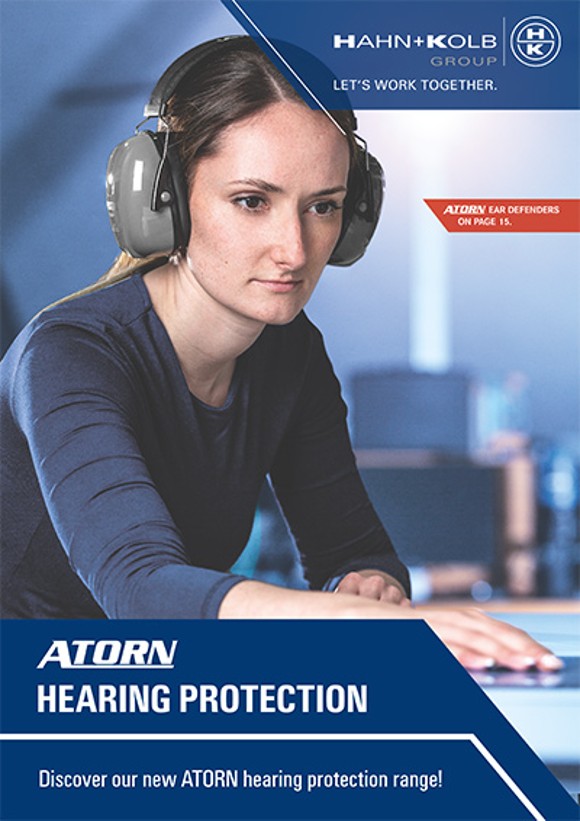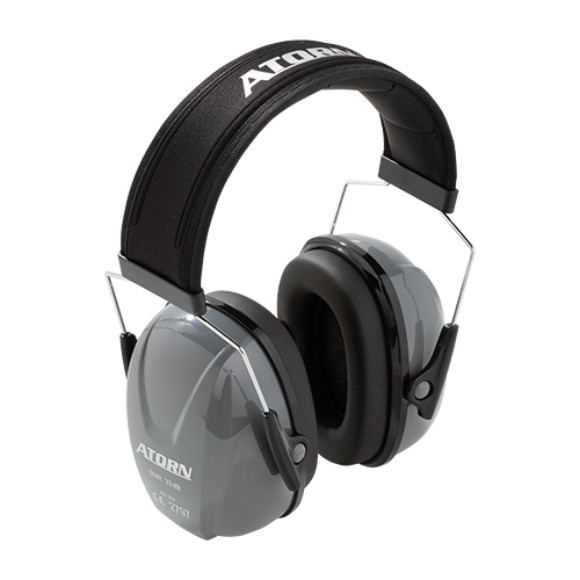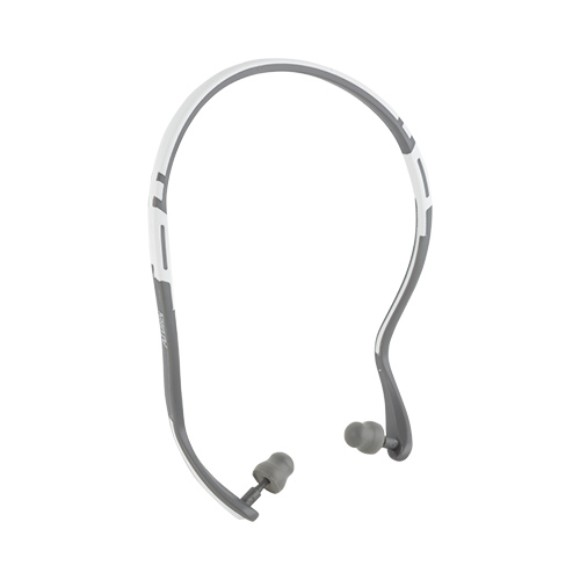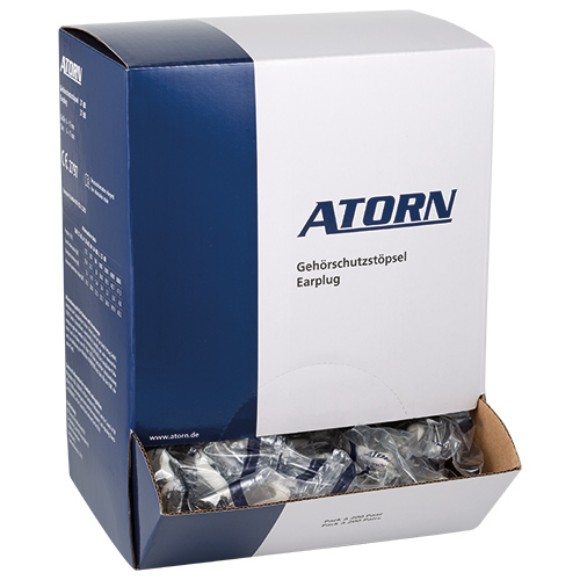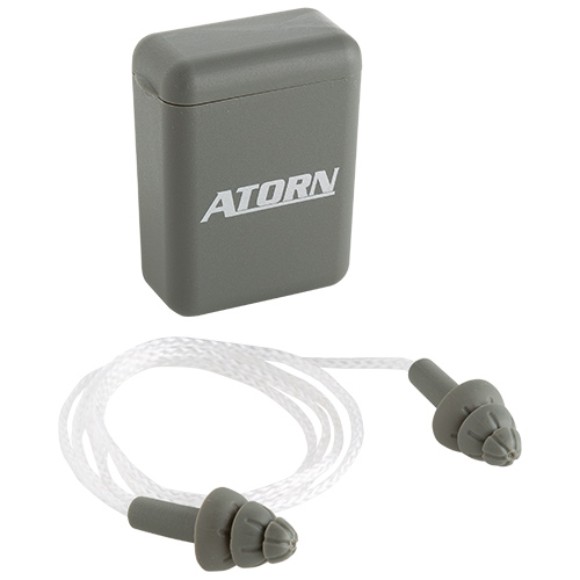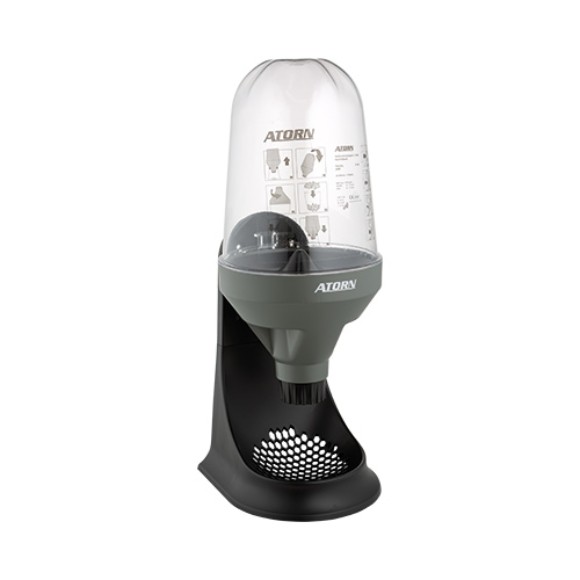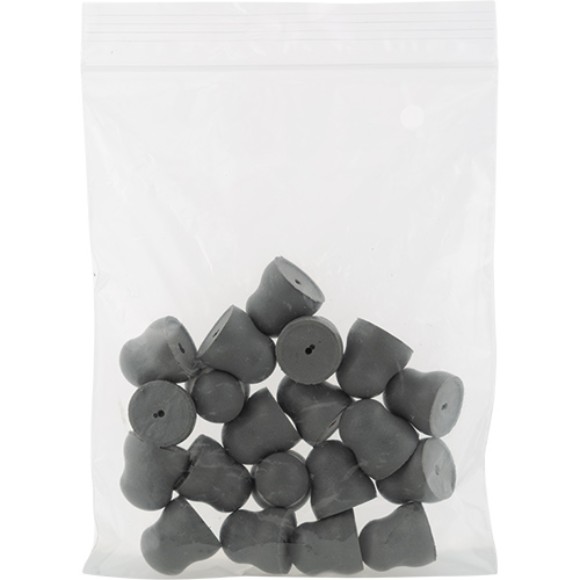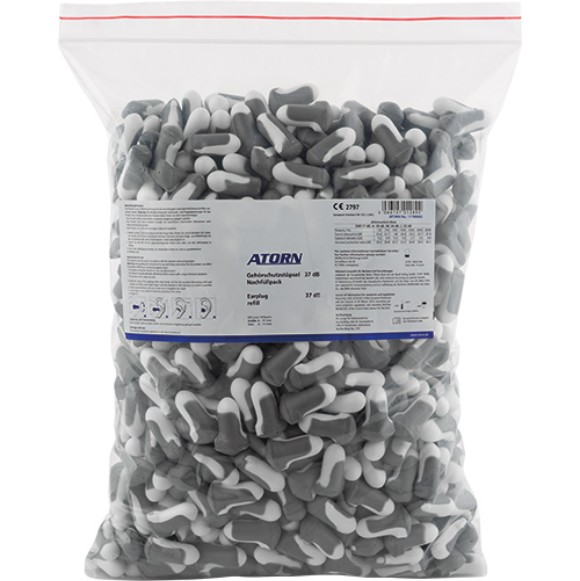
Hearing protection – Noise protection at work
To minimize the risk of hearing damage, there are several types of hearing protection, including ear plugs , ear defenders and banded ear plugs . In addition to the classic methods of hearing protection, HAHN+KOLB also offers you individual solutions such as earmolds.
To the productsWhat hearing protection does the brand ATORN offer?
The choice is yours: whether you need ear plugs, ear plug dispensers, reusable earplugs with cord, banded ear plugs or ear defenders.
In our modern and high quality ATORN assortment you can find everything!
Find out all about the new ATORN hearing protection range in our latest brochure.
At what noise level must I wear hearing protection?
To avoid tinnitus or complete loss of hearing, hearing protection must be provided starting at a daily noise exposure level of 80 dB or a peak sound pressure level of 135 dB. According to DGUV 112-194, hearing protection must be worn at a daily noise exposure level of 85 dB or a peak sound pressure level of 137 dB.
In general, the target noise level after sound attenuation under hearing protection should be between 70 and 80 dB.
| Noise Source | Loudness | Effect |
| Firecrackers | 150 dB | |
| Aircraft takeoff, jet, gunshot | 140 dB | Irreparable damage |
| Car races | 130 dB | |
| Thunder | 120 dB | Pain threshold |
| Chainsaw, circular saw, pneumatic hammer | 110 dB | |
| Disco, motorcycle | 100 dB | |
| Headphones, car horns, tractor | 90 dB | Danger to the hearing |
| Highway, passing train | 80 dB | Increased risk for cardiovascular diseases |
| Main road, vacuum cleaner, TV, lawn mower | 70 dB | Increased risk for cardiovascular diseases |
| Normal street traffic | 60 dB | |
| Normal conversation, bird chirping | 50 dB | |
| Light rain, fridge from 1 meter away, quiet music | 40 dB | Distraction threshold |
| Whispering | 30 dB | |
| Breathing sounds, ticking of a wristwatch | 20 dB | |
| Rustling leaves in the distance | 10 dB | |
| 0 dB | Hearing threshold |
How long should I wear my hearing protection?
In noisy environments, it is essential that hearing protection is worn 100% of the time, as even short breaks in use can lead to a significant loss of protective effectiveness.

What is the right hearing protection for me?
When selecting the right hearing protection, the first step is to determine the noise level at the respective workplace. The second step involves considering personal preferences and the additional personal protective equipment of the user.
Tests of the actual protective effectiveness of hearing protection devices show that the noise reduction values achieved during type testing are usually not reached in practice. Therefore, the following correction factors should be considered in the third step when selecting the appropriate hearing protection:
- Moldable disposable earplugs : 9 dB
- Pre-formed reusable earplugs : 5 dB
- Headband earmuffs : 5 dB
- Cup earmuffs : 5 dB
For example, if the noise level in metalworking is 100 dB and the worker wants to use headband earmuffs, they should choose earmuffs with a noise reduction rating of at least 25 dB. This ensures that the worker's hearing is exposed to a noise level of no more than 80 dB, taking into account the correction factor.
Example:
100 dB (noise level) – 25 dB (noise reduction rating of headband earmuffs) + 5 dB (correction factor for headband earmuffs)
= 80 dB (remaining noise level and target value)
It is important to ensure that neither underprotection nor overprotection occurs. The risks of underprotection are long-term, irreversible hearing damage, while overprotection can lead to communication difficulties and isolation.
Which hearing protection product is suitable for my working conditions?
When it comes to sound attenuation, all hearing protection products are equivalent. Whether earplugs, headband earmuffs, or earmuff cups are suitable for your intended use is revealed by the table below.
Selection guide based on working conditions
✓ generally suitable
≈ conditionally suitable
x not suitable
| WORKING CONDITIONS | EARMUFFS EN 352 Part 1, 3-6 |
EARPLUGS EN 352 Part 2 |
|||
| Reusable | Reusable | Disposable | Headband earmuffs | Corded | |
| High temperature and humidity | ✓ | ✓ | ✓ | ✓ | |
| Dust | ✓ | ||||
| Continuous noise exposure | ✓ | ✓ | ✓ | ✓ | |
| Repeated short-term noise | ✓ | ✓ | ✓ | ||
| Locating sound sources | ✓ | ✓ | ✓ | ✓ | |
| Vibration and rapid head movements | ✓ | ✓ | |||
| Materials, dirt on hands | ✓ | ✓ | |||
| Work with safety glasses, respirator, helmet | ✓ | ✓ | ✓ | ||
What are earmolds?
Earmolds are the individual solution for every ear. They are custom-fitted to the wearer’s ear and provide the best possible protection in noisy workplaces.
We offer a wide range of hearing protection earmolds made from various materials, in different designs, and with variable attenuation effects. The service life of a custom earmold is approximately 5 years, making hearing protection earmolds not only highly effective but also very sustainable.
Our PPE specialists are happy to advise you on professional and flexible solutions tailored to the specific needs of your company. Please contact your HAHN+KOLB representative or send us your inquiry via email.
Request nowHearing Protection Program in the HAHN+KOLB Online Shop
Noise in the workplace is one of the most underestimated sources of danger, yet noise-induced hearing loss is the most commonly recognized occupational disease. With the right hearing protection, however, such conditions can be 100% prevented. Hearing protection is recommended at noise levels starting at 80 dB, and it is mandatory at sustained noise levels of 85 dB or noise peaks of 137 dB. Companies are required to provide suitable protection for their employees.
The ATORN hearing protection program offers a selection of different hearing protectors—suitable for every need and application.

